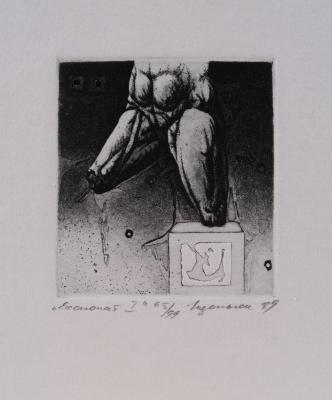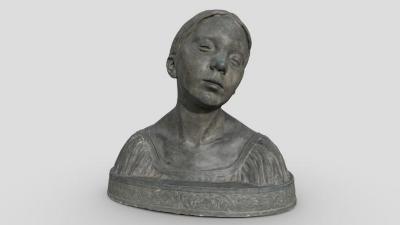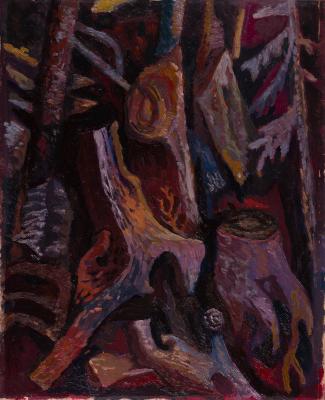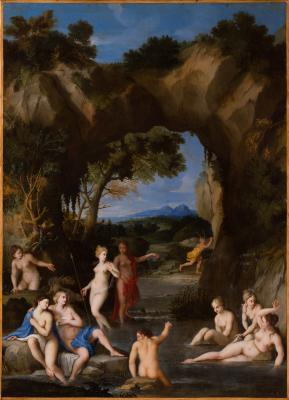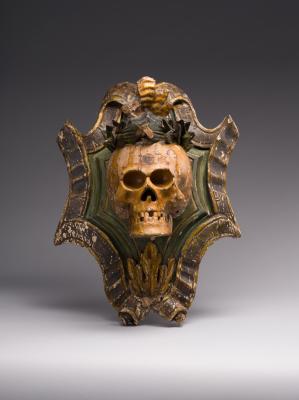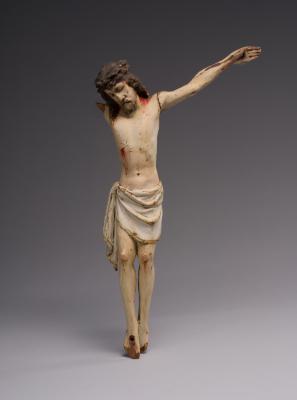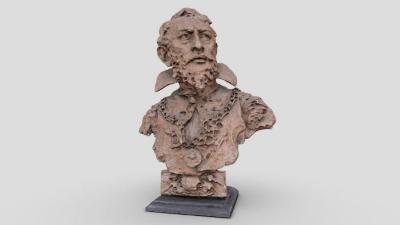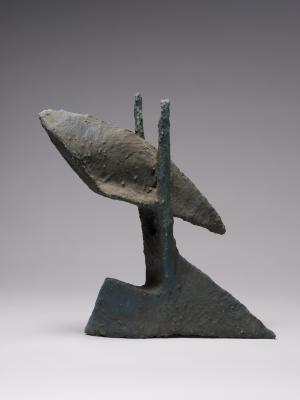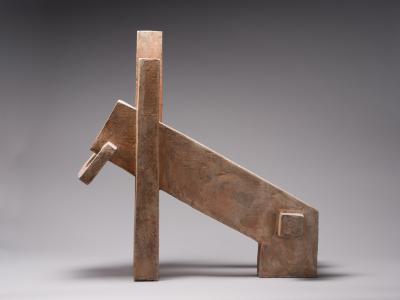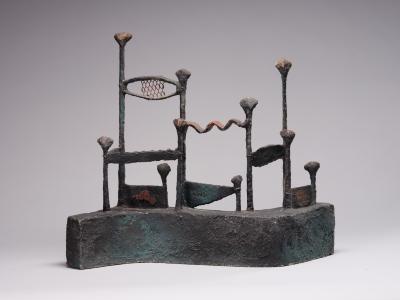The composition is known only in one version of 1816, which was issued in the album Raccolta di Cinquanta Costumi li più interessanti delle città, terre e paesi in provincie diverse del Regno di Napoli (Collection of Fifty Most Interesting Picturesque Costumes from Cities, Towns and Villages of Different Provinces of the Kingdom of Naples) published by Giovanni Scudellari in Rome in 1817. The artist depicts a young woman in a luxurious national dress, an apron embroidered with gold threads, dressed over a white shirt and blue skirt. The woman is holding a little girl's hand; with the other hand, she is leaning on a stick; there is a basket over her shoulder. The travellers are walking along the mountain path. In the background, there is a mountain range under which one can see the citadel of a small town. This is Brienza, one of the mountain towns of the Southern Italian province of Basilicata, which in the nineteenth century was a part of the province of Salerno. The travellers' clothing is painted with blue, red, and yellow watercolours. The trees are painted with green colours.










